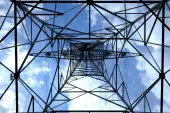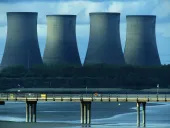Australia to start 2013 without a Solar Credits mechanism
Greg Combet, Minister for Climate Change and Energy Efficiency, announced the phase-out of the Solar Credits
mechanism.
The decline of system costs against low out-of-pocket expenses despite reduction of the multiplier from 5 to 3
on 1 July 2011 and 3 to 2 on 1 July 2012.
The Australian federal government has announced the phase-out of its Solar Credits mechanism for small-scale,
mostly residential, installations six months ahead of schedule.
The phase-out, which is effective from January 1 2013, comes shortly after the solar credit mechanism was
reduced in July this year.
Administered by the Clean Energy Regulator, the legislative arm of the government, Solar Credits are provided
in the form of additional tradable certificates called small-scale technology certificates (STCs) for eligible
small-scale renewable energy systems including solar PV systems.
Although the multiplier, which multiplies the number of credits issued for the first 1.5kW of a solar power
system, was always designed to reduce over time, the government believes this early phasing out of the
multiplier will lower the impact of the “high uptake of solar PV on electricity costs for homes and
businesses”.
By 2014, the government estimates that the Solar Credits scheme will cost electricity consumers around 70% less
than in 2012. The overall reduction in electricity bills is expected to be A$80 to A$100 million (approx. US$83
to 103 million) in 2013, according to government figures.
In January 2012, Australian consulting company Solar Choice published estimates on the savings that would be
lost to residents if the Solar Credits scheme was abolished:
3x multiplier 2x multiplier 1x (no multiplier)
REC/STC Zone 1 109 ($3270) 72 ($2160) 36 ($1080)
REC/STC Zone 2 103 ($3090) 69 ($2070) 34 ($1020)
REC/STC Zone 3 93 ($2790) 62 ($1860) 31 ($930)
REC/STC Zone 4 79 ($2370) 53 ($1590) 26 ($780)
By contrast, the government has produced a chart (above left) to show the decline of system costs against low
out-of-pocket expenses despite a reduction of the multiplier from 5 to 3 on 1 July 2011 and 3 to 2 on 1 July
2012.
The government announcement concluded that the installation of small-scale systems and solar hot water heaters
will continue to be supported under the Renewable Energy Target scheme.
https://www.pv-tech.org/news/australia_to_start_2013_with_no_solar_credits_mechanism
Reactors vital to Kansai area this winter, Kepco claims
What would happen if the two working reactors at the Oi power plant — Japan's only reactors brought back online
since the Fukushima meltdowns last year — are shut down because of a suspected active fault under their
critical equipment?
According to Kansai Electric Power Co., the Kansai region would suffer severe electricity shortages this winter
because demand is projected to far exceed the utility's capacity to generate power through other means.
Kepco estimates that the peak demand this February will be 25.37 million kw, while the firm now has a maximum
supply capacity of 26.42 million kw — including the Oi reactors.
Without the Oi plant, the capacity drops to 21.96 million kw, or 13.4 percent under its capacity to meet peak
demand, Kepco says, because it would lose 2.36 million kw from the two Oi reactors and 2.1 million kw from
pumped-storage hydroelectric stations that are charged by electricity from the Oi plant during off-peak
nighttime hours.
A pumped-storage hydroelectric plant generates electricity by letting pumped water in a higher reservoir rush
through a turbine into another, lower reservoir.
The water is pumped mainly by using nuclear power at night when power demand is low.
Some experts, however, question Kepco's estimates for its supply capacity, saying power purchased from other
firms would let it tide over any shortfalls.
Hideaki Matsui, a senior energy expert at the Japan Research Institute, is one such expert.
Matsui said Kepco could get more electricity from independent power producers around Kansai as well as regional
utilities elsewhere in Japan. He also pointed out that Kepco's supply could be increased by postponing regular
inspections of some its thermal power units.
Kepco's estimates include getting about 4.6 million kw from other sources, including independent power
producers and firms with in-house generators. The estimates, however, do not include help from fellow regional
utilities.
A Kepco spokesman said depending on the situation, the utility could buy more power from independent producers
and will also ask other utilities if they can spare some power.
On Oct. 30, Kepco told the government that if five other utilities in western and central Japan helped out to
the point where their own reserves fell to around 3 percent, Kepco would only be 1.7 percent under peak demand.
Kepco also said the No. 3 unit at its Kainan thermal power plant is scheduled for a regular checkup starting
Jan. 11, but this might be postponed if the Oi reactors are turned off.
Kepco has already postponed regular checks of some of its thermal units amid the nuclear moratorium.
https://www.japantimes.co.jp/text/nn20121116f2.html



















 Advertise
Advertise







